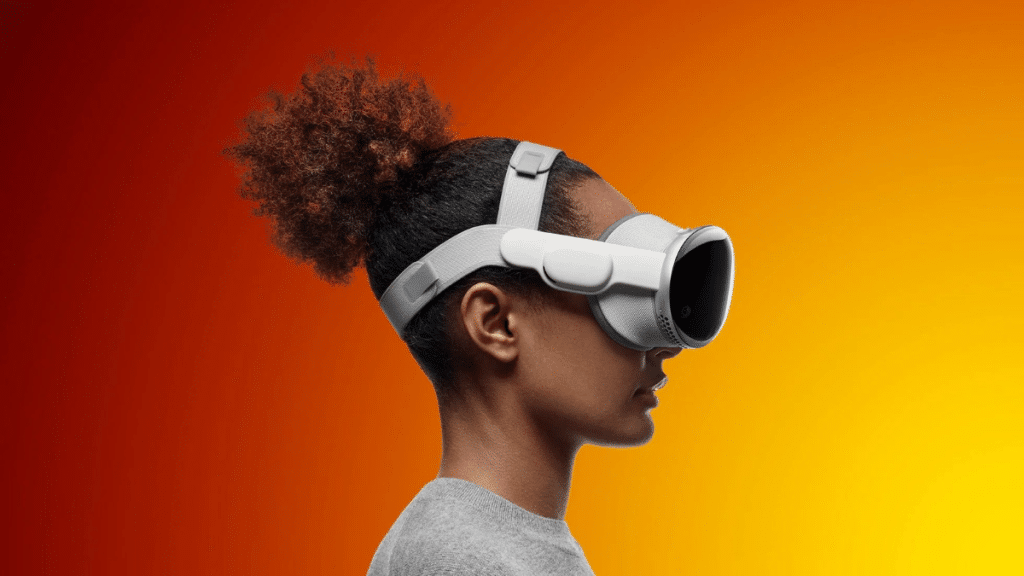Apple Rethinks Vision Pro Strategy After Slow Adoption, Weak Developer Support, and Growing Competitive Pressures.
Apple’s Vision Pro, launched at a price of $3,499, once aimed to offer an advanced experience in spatial computing and augmented reality. However, nearly two years later, adoption rates remain low, there are still few apps available, and everyday users are questioning whether the Vision Pro lives up to the hype or if it’s simply a status symbol.
Why are Vision Pro Sales Behind Pace?
The hype surrounding Vision Pro faded after sales fell by the wayside. Around 370,000 units were reportedly sold in Q3 2024, prompting Apple to slow down production. Analysts say the price has been a significant deterrent to owners, especially with the cheaper alternatives from Meta’s Quest lineup continuing to dominate the AR/VR space through wider adoption.
Price is not the only barrier. Spatial computing has a high learning curve. People need to get used to novel interfaces for engaging with digital content, which dampens mass market adoption. Even Apple diehards are reluctant to spend money on a device that, beyond niche applications, is more of a status symbol than a tool to use daily.
Observers also note that the AR/VR market is changing quickly. Rivals have spent a lot on content and games that appeal to broader audiences. Vision Pro has to depend mainly on Apple’s brand and hardware innovation, elements that might not be sufficient for mass adoption.
Why Developers are Reluctant With Vision Pro
A healthy platform relies on a robust app ecosystem. Vision Pro, though, cannot attract developers. Many cite Apple’s strict App Store policies, high fees, and the device’s limited user base.
This warning is seen in the lack of mainstream apps. Netflix, YouTube, and top games still don’t have Vision Pro-specific versions. Without a strong catalog, the device loses its draw, bringing a chicken-and-egg dilemma: developers hold out for a broader market, while consumers wait without great content.
Industry commentators say Apple’s developer community might require special incentives, including lower fees or co-marketing initiatives, to drive innovation and make users discover practical and fun applications for the headset.
Is Vision Pro Worth its Price?
Even native apps from Apple fail to make the Vision Pro a must-have. People say that aside from video streaming, immersive apps, or serving as an extended Mac screen, the headset offers few experiences worthy of its high price tag.
Apple’s spatial productivity and creative apps, like virtual desktops and 3D workspaces, show the headset’s capabilities. These apps appeal primarily to professionals or enthusiasts, but not the mass consumer. Lacking a more expansive library of third-party apps, Vision Pro risks being seen as a high-end gizmo instead of a revolutionary platform.
Customer input also indicates lost opportunities in entertainment and social experiences, where rivals have established tougher ecosystems. This opportunity gap constrains the headset’s uptake and depresses the chance of repeat usage.
How is Apple Responding?
Apple is planning to rethink everything. The company is said to focus on a lower-cost headset, putting the second-generation Vision Pro development on the back burner. This transition means appealing to a broader, mainstream populace instead of only early adopters and tech enthusiasts.
The transition demonstrates a valuable lesson: innovative hardware in isolation will not deliver market success. Apple will almost certainly require more robust developer incentives, intelligent content collaborations, and price points that reduce developers’ and consumers’ barriers.
Can Apple Still Compete in AR/VR?
The Vision Pro showcases Apple’s technology leadership, from display resolution to spatial sensors. However, its price, minimal content, and reluctant developers may cause competition to catch up with it.
Therefore, being in the game will require Apple to be innovative while keeping prices competitive to stay ahead of the competition. More apps, some collaboration, and developer compromises for cheaper pricing will then transform the Vision Pro from a super-luxury niche product into a mass AR platform.
If Apple can pull this off, Vision Pro may still revolutionize AR computing. But the window is shrinking as competitors bet heavily on content, pricing, and mass-market penetration.


